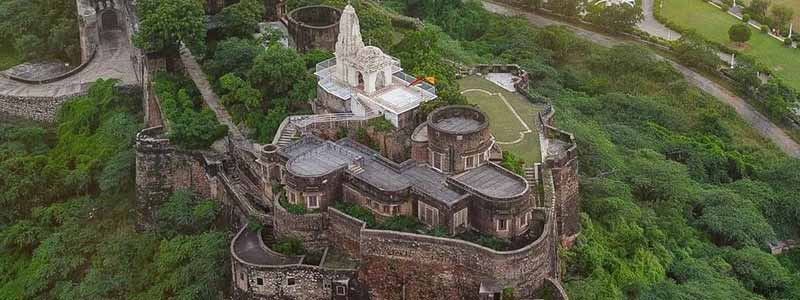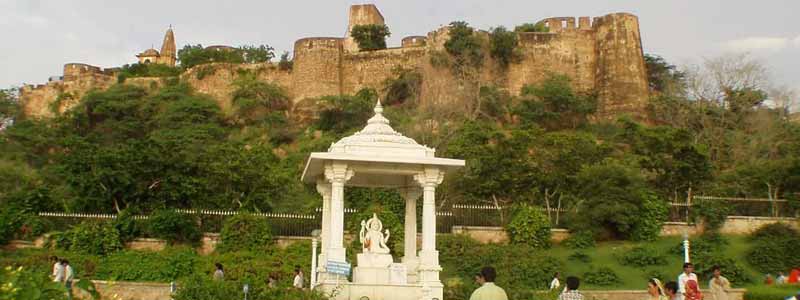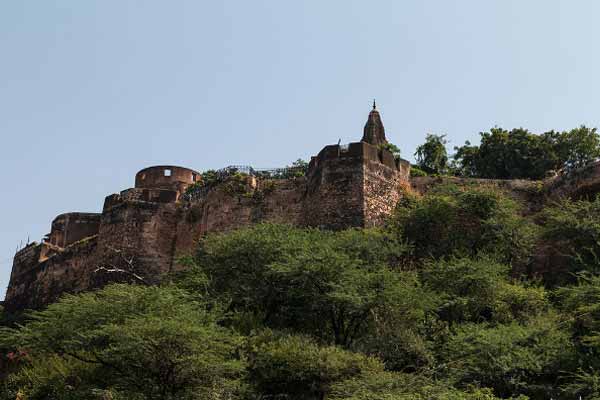Moti Doongri Fort Jaipur is a small hill around which the city of Jaipur flourishes. Moti Doongri means pearl hill, because the hill indeed resembles a pearl drop. Visitors go there to pay homage at the famous Ganesh temple, the most auspicious and important religious temple in Jaipur. The Ganesh temple was built by Seth Jai Ram Paliwal, sometime in the early 18th century. A legend goes, the King of Mewar was heading back to his palace after a long journey and was carting a massive Ganesh idol on a bullock cart.
The king had decided that he would build a temple for the idol of Lord Ganesh wherever the bullock cart stopped. Apparently the cart stopped at the foot of the Moti Doongri Fort, which is where the temple is situated today. The hill also has an exotic palace perched right on top. A replica of a Scottish castle, it was once the royal home of Maharaja Sawai Man Singh. It continues to belong to the royal family. The mere view of this castle is extremely exotic.

History of Moti Doongri temple
Legend has it that way back in the 17th century when the King of Mewar was returning home, he was carrying an idol of Lord Ganesha with him on a bullock cart. He declared that wherever the bullock cart first stopped, he would build a temple for the lord Jaipur Tour Packages.
The cart stopped at the foothill of Moti Doongri Fort which became the site for the temple. Construction of the temple was entrusted to Seth Jairam Paliwal and Mahant Shiv Narain who built this temple in four years and it was completed in 1761.
A complex resembling a Scottish castle was built at the site for Maharaja Madho Singh’s son and the temple was housed within it. The surrounding palace is not open for visitors as it is a private property but the temple is open for one and all. This temple got its name Moti Doongri as it is built at the bottom of Moti Doongri hill. Moti translated in English means a pearl while Doongri means a small hill in the local language.

Architecture of Moti Doongri temple
The temple premise covers a span of 2 km and its building has three domes which signify the three main religions followed in the country. Intricate latticework in marble accentuates the beauty of this temple which has been carved out of stone. The walls are adorned with scenes from mythology that leave the visitors spellbound Moti Doongri Fort.
There are two ledges on both sides of the entrance to the temple for the devotees to sit after they have offered prayers at the temple. It is believed that Lord Ganesha is pleased if the devotees sit for a few minutes after offering their prayers and do not rush back home immediately Jaipur Attractions.
Best time to visit the temple
As they say, there is never the best time to visit a temple since one can go there whenever one wishes to offer prayers. Moti Doongri Fort is thronged by devotees every day of the week but Wednesday is one of the busiest days for the temple. Lord Ganesha is said to be the god of the planet Mercury and Wednesday is the day for Mercury.
A small fair is set outside the temple on this day every week where hawkers selling toys, sweets, and other knick-knacks cover the road leading up to the temple. The entry of vehicles to the gate of the temple is restricted on this day and barricades are set at a distance from the temple premises.
On other days of the week, Darshan takes place seven times during the day. Aartis, bhajans, and kirtans are sung during the darshan and devotees pay homage to Lord Ganesha when the curtains are pulled aside for him to give an appearance.
A large number of devotees also visit the temple from the city and other neighboring cities on the occasion of festivals like Ganesha Chaturthi, Annkuta, Janmashtami, and Paush Bada. During these festivals, the road leading up to the temple is beautifully decorated.
